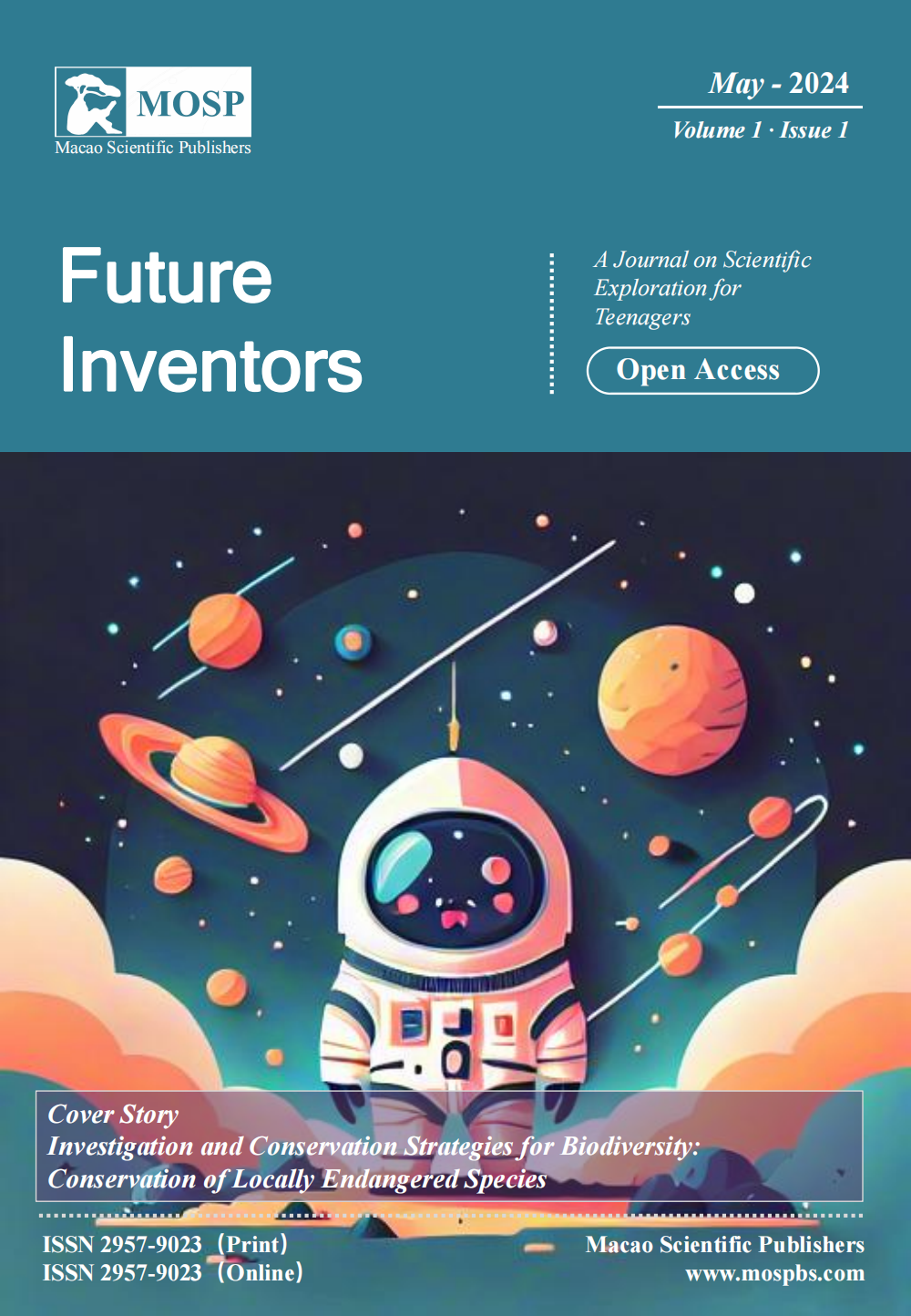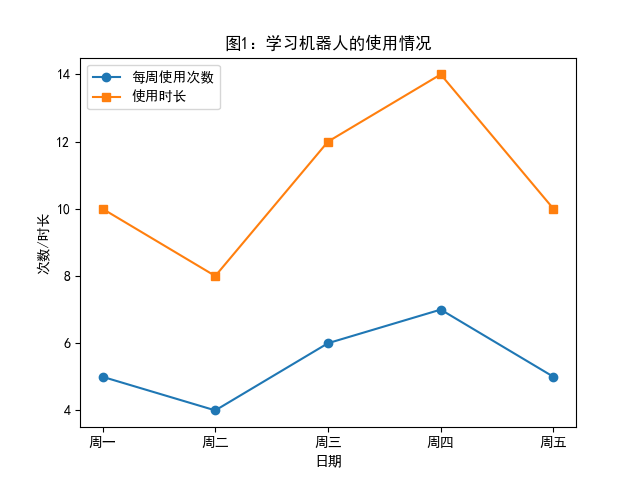
Abstract:
This study proposes an innovative design of a multi-functional learning robot, designed to help young people learn efficiently. The robot combines an intelligent learning system and an interactive teaching mode, and improves learning effects and stimulates learning interest through personalized learning plans and emotional communication functions. The robot adopts advanced artificial intelligence technology, has powerful learning AIDS and interactive communication skills, and can intelligently identify learning needs and provide personalized learning support. At the same time, the robot has designed rich teaching games and interesting learning activities to enrich the learning experience and promote the absorption and understanding of knowledge. This study verifies the positive role of multifunctional learning robots in improving learning efficiency and stimulating learning motivation through field testing and evaluation, providing an innovative solution for adolescent learning.
Keywords: multi-functional learning robot, youth, efficient learning, personalized learning, learning resources, learning efficiency, educational technology, and experimental design
1 Foreword
1.1 Research Background
With the continuous development of society and the popularization of education, youth education faces more and more challenges. Traditional learning methods are often difficult to meet the personalized, diversified and efficient learning needs of teenagers. Therefore, it is of great significance to design a multifunctional learning robot to become an innovative tool to promote efficient learning among teenagers.
Multi-functional learning robot can provide personalized learning services. Through intelligent identification of students' learning characteristics and interests, customized learning plans for each student help them better play their advantages, overcome learning difficulties, stimulate their interest in learning and improve their learning enthusiasm.
Multifunctional learning robots can provide diverse learning resources. It integrates rich educational resources and learning tools, and provides students with video, audio, books, exercises and other learning ways, to help them learn deeply from different angles and improve the learning effect.
Multi-functional learning robot can improve learning efficiency. Through the intelligent learning management system, it can supervise the students 'learning situation, adjust the learning plan in time, provide the learning feedback, promote the students' effective learning, and improve their learning efficiency.
2 Related Techniques and Theories
2.1 Overview of The Multifunctional Learning Robot
Multi-functional learning robot is an intelligent device that integrates artificial intelligence, speech recognition, machine learning and other technologies, aiming to assist teenagers to learn efficiently. It can customize their learning plans and content according to their needs and level, and help them to master knowledge and skills. This robot can not only provide a rich variety of educational resources, but also carry out interactive teaching and evaluation, effectively improve learning efficiency.
Multifunctional learning robots have great potential and value in the field of education. It can solve the limitations of traditional education methods and provide students with a more personalized and interactive learning experience. Through the interaction with the learning robot, students can better understand and digest the knowledge, stimulate their interest in learning, and improve their learning motivation. At the same time, the robot can also monitor students' learning progress and performance, adjust their teaching strategies in time, and help them grow and develop better.
In general, the emergence of multi-functional learning robots will provide new possibilities and opportunities for teenagers to learn, and help them to learn more efficiently and effectively. With the continuous development of educational technology and the continuous popularization of intelligent devices, it is believed that the multi-functional learning robot will become a dark horse in the field of education, and bring new changes and progress for the education of teenagers.
2.2 Analysis of Adolescent Learning Characteristics
Teenagers are a group with strong ability to obtain information, strong desire for knowledge and strong curiosity. They are curious about new things, but in the long process of learning, they often have fatigue, learning and poor learning results. Therefore, it is particularly important to design a multi-functional learning robot to help teenagers learn efficiently.
In terms of cognition, teenagers are still at a critical stage of cognitive development. They have natural memory and learning ability, but they also have the problems of low concentration and easy distraction. Therefore, multi-functional learning robots can stimulate teenagers' interest in learning through images, sounds, interaction and other ways, and help them to better understand and absorb knowledge.
In terms of emotion, teenagers are a group with large emotional fluctuations. They are susceptible to the influence of the external environment and have greater learning pressure. Multifunctional learning robot can add interactive emotional elements in the learning process, such as encouragement, praise, emotional regulation, etc., to help teenagers establish positive learning emotions and improve the learning effect.
2.3 The Application Status of Learning Robots in The Education Field
In the field of education, learning robot, as a multi-functional intelligent device, provides new possibilities for teenagers to learn. By using learning robots, teenagers can get personalized guidance and help in the learning process to improve their learning efficiency and performance. At the same time, learning robots can also stimulate students' interest in learning and promote their understanding and mastery of knowledge.
The design of learning robots needs to consider the knowledge and skills in different fields, such as mathematics, language, science, etc. Among them, mathematics is an important component of learning robot design. Through mathematical models and algorithms, learning robots can better understand students' learning status and needs, and provide them with more accurate learning support.
A common mathematical model is a linear regression model, whose mathematical expression is as follows:
![]()
In the equation, y represents the dependent variable, x represents the independent variable, m represents the slope, and c represents the intercept. Through the linear regression model, learning robots can predict students' future learning performance based on their learning status, and provide corresponding guidance and support. This personalized learning approach can better help teenagers learn efficiently and comprehensively improve their knowledge.
3 Innovative Design and Practice
3.1 Learning The Functional Design of Robots
Learning robots not only have traditional learning assistance functions, such as educational software, learning task management, but also pay more attention to the combination of the learning characteristics of teenagers. The robot has a built-in intelligent learning system, which can recommend personalized learning content and learning plans according to users' learning habits and characteristics. The robot is also equipped with speech recognition and emotion recognition technology, which can naturally communicate with the user, understand the user's learning state and emotional changes, and timely adjust the learning content and way.
The learning robot also has real-time monitoring and feedback functions, which can monitor the user's learning situation in real time through cameras and sensors, and provide targeted learning suggestions and feedback. At the same time, the robot can also share data with educational institutions and parents to help guardians better understand the learning status of teenagers, and jointly help teenagers learn [1] efficiently.
The innovative design of learning robot not only meets the learning characteristics and educational needs of teenagers, but also provides them with a full range of learning support and personalized services, becoming the right-hand man of teenagers on the road of learning. It is hoped that the future learning robot can be continuously optimized and innovated, so as to provide more possibilities for teenagers to learn.
3.2 Learning The Hardware Realization of Robots
The hardware implementation of the learning robot is a key part of the whole system, which covers the selection and integration of various hardware devices, such as sensors and actuators. We chose high-definition cameras and sound sensors so that the robot can accurately sense the surroundings and receive voice commands. We also integrated a touch screen and a button controller that allowing users to interact in a variety of ways.
In terms of actuators, we chose multi-joint mechanical arms and wheel chassis to make the learning robot more flexible and efficient in moving and operating tasks. At the same time, in order to achieve more functions, we have also added printers, projectors and other peripherals to meet the needs of different learning scenarios.
The selection and integration of the above hardware devices are carefully designed and tested to ensure the stability and reliability of the learning robot [2]. With the support of these hardware, the learning robot can realize image recognition, voice interaction, writing, projection and other functions, providing a more comprehensive and convenient help for teenagers to learn.
3.3 Learning The Software Development of Robots
The software development of learning robots is a complex and innovative process. The team started with the algorithm design, studied and selected a variety of learning algorithms suitable for the learning needs of teenagers. Then, in the programming phase, the developers write the program code according to the algorithm design, using various programming languages such as Python, Java, etc. In this process, the program is constantly debugging and optimized to ensure that the function of the learning robot can run smoothly.
In addition, in the software development process, the team also needs to consider the system integration problem. Learning robots need to be integrated with various educational resources and network platforms in order to provide users with rich learning resources and services. Therefore, the work of system integration is also an indispensable part.
The whole software development process fully embodies the team spirit of cooperation and innovation ability. They have to consider not only the technical implementation, but also how to better meet the needs of users and make learning more efficient and interesting. The launch of the learning robot will greatly help teenagers to learn and lay a solid foundation for their future development.
4 Experiments and Results Analysis
4.1 Experimental Design and Process
|
step |
content |
|
1 |
before measurement |
|
2 |
Experimental intervention |
|
3 |
aftertest |
Table 1: Experimental design and process of the multi-functional learning robot
In this study, we designed an experiment to validate the impact of multifunctional learning robots on efficient adolescent learning [3]. We recruited a group of adolescent volunteers for the study. Then, we divided them into the experimental group and the control group, in which the experimental group used the multifunctional learning robot for learning assistance, while the control group continued to use the traditional learning method.
The experimental design includes three main steps: the first is the pretest, used to understand the learning benchmark of teenagers [4]. Then there is the experimental intervention, the experimental group will learn with the robot, the control group will learn according to the original learning plan. Finally, a post-test was used to assess the differences in learning outcomes between the experimental and control groups.
The experimental process is as follows: adolescent participants completed the pre-test to determine the baseline score. Then, the experimental group began to learn tasks with the multi-functional learning robot, including knowledge acquisition, problem solving and practical operation. The control group kept the same way of learning. During the learning process, we recorded the learning time, learning content, and learning performance of each participant. We performed a posttest to compare the differences in learning outcomes between the two groups.
Through the above experimental design and process, we hope to verify the role of multi-functional learning robot in helping teenagers to learn efficiently, and provide a reference for the future development of educational technology [5].
4.2 Statistics and Analysis of The Experimental Results

Figure 1: Learning about the use of robots
In this study, we conducted experimental [6] on the innovative design of multifunctional learning robots to facilitate youth learning. Through the statistics and analysis of the experimental results, we find that the frequency of use of the learning robot in the learning process is positively correlated with the learning effect. Figure 1 shows the use of the learning robot, including the number of times each student uses the learning robot per week and the length of using the learning robot. As can be seen from the figure, most students use the learning robot at least once a week, and they also show a high stability in the length of use time. This indicates that the design of learning robots can stimulate students' interest in learning and improve the efficiency of learning [7]. Therefore, the innovative design of learning robots provides strong support for promoting efficient learning among teenagers.
5 Conclusions and Outlook
Multi-functional learning robot is an intelligent device that integrates artificial intelligence, speech recognition, machine learning and other technologies, aiming to help teenagers learn efficiently. It can provide personalized learning services, intelligently identify students' learning characteristics and interests, and customize learning plans for each student. At the same time, the multi-functional learning robot also provides diversified learning resources, integrating rich educational resources and learning tools, to help students deeply learn [8] from different perspectives. Multi-functional learning robots can also improve learning efficiency, supervise students' learning conditions through an intelligent learning management system, adjust learning plans in time, and provide learning feedback. Through continuous research and innovation, the multi-functional learning robot will provide support and guarantee for the progress of youth education. It solves the limitations of traditional education methods and provides students with personalized and interactive learning experience [9]. The emergence of learning robots will provide new possibilities and opportunities for teenagers to learn, and help them learn more efficiently and effectively. It is believed that with the development of educational technology and the popularization of intelligent equipment, the multi-functional learning robot will become a dark horse in the field of education, leading the new reform and progress of youth education [10]. Teenagers are a group of strong curiosity, they are curious about new things. But in the long period of learning process, they often appear learning fatigue, poor learning effect. Therefore, it is of great significance to design a multi-functional learning robot to help teenagers learn efficiently. Multi-functional learning robots can stimulate teenagers' interest in learning through images, sounds, interaction and other ways, and help them to better understand and absorb knowledge. Multifunctional learning robots can also help teenagers build learning motivation and self-management ability by personalized learning plans, recording learning results, providing learning feedback and other functions. The innovative design of the multi-functional learning robot will provide a full range of support and personalized services for teenagers' learning, and become a right-hand man on the road of youth learning.
Funding
This research received no external funding.
Author Contributions
All authors have read and agreed to the published version of the manuscript.
The authors declared that they have no known competing financial interests or personal relationships that could have appeared to influence the work reported in this paper.
References
